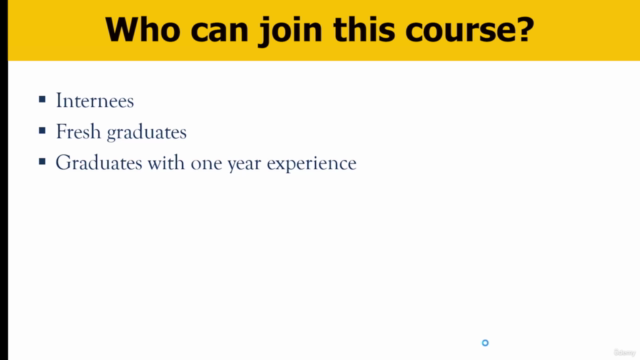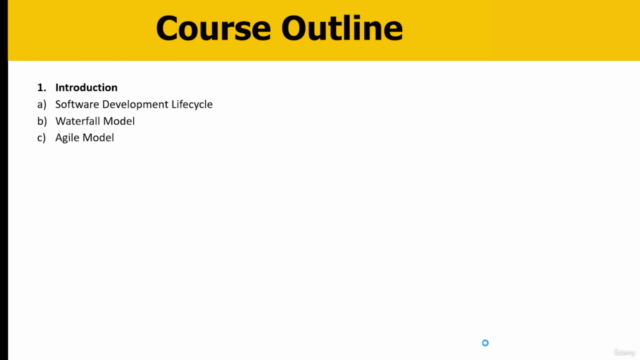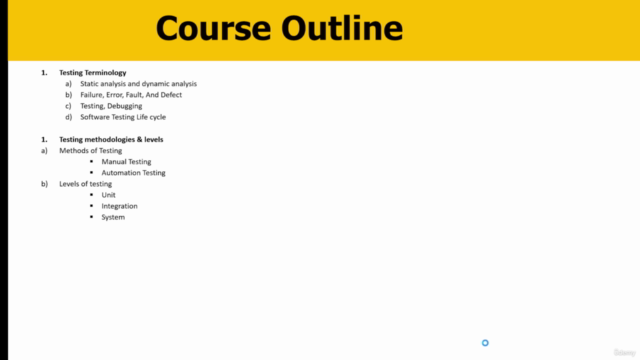Software Testing with Generative AI- Beginners Guide 2025

Why take this course?
-
Software Testing is a critical part of the software development process, aimed at evaluating the quality of software and finding any defects or bugs before it's released to users. It ensures that the product meets specified requirements and functions correctly under various conditions.
-
Testing Processes:
- Error, Fault, And Defect are often used interchangeably in the context of software testing to refer to a mistake or incorrect section in the product that actualizes as a software failure which can affect the functionality or performance of the application.
- Testing, Debugging: Testing involves executing a program with the intent of finding defects. Debugging is part of testing where the tester attempts to identify and fix these bugs or issues.
- Software Testing Life cycle (STLC) is a comprehensive process that ensures quality is taken into consideration from the initial stage of software development (requirements) through maintenance.
-
Testing methodologies & levels:
- Methods of Testing include:
- Manual Testing: Tests performed by human testers without using automation tools.
- Automation Testing: Utilizes software tools to run tests and validate results, often for repeatable functions within an application.
- Levels of testing:
- Unit Testing: Checks individual units or components of a software in isolation from other units.
- Integration Testing: Ensures that different units/modules fit and work together as expected.
- System Testing: Tests the complete and integrated software to verify compliance with specified requirements.
- Regression Testing: Verifies that newer versions of the software preserve the existing functionality.
- Acceptance Testing: Conducted to determine if the system satisfies the business requirements and is ready for deployment.
- Methods of Testing include:
-
Testing techniques:
- Black Box Testing: Tests software without knowing its internal structure or workings, based solely on specifications.
- White Box Testing: Also known as clear box testing or glass box testing, it involves looking at the source code to ensure that each module and path of the program works as intended.
- Grey Box Testing: Combines both white-box and black-box approaches, where the tester has some knowledge about the internal workings of the product being tested, but also considers the user's perspective.
- Types of Testing include:
- Functional Testing: Checks the functionality of applications according to specifications provided.
- Non-functional Testing includes:
- Automation
- Performance
- Security
- Data
- Platform
-
Functional Testing:
- Involves testing each function and transaction of a system, ensuring that the software performs as per user expectations.
- Kualitatem Process for testing involves various techniques like:
- Equivalence Partitioning: Divides input data into partitions of equivalent data items.
- Boundary Value Analysis (BVA): Tests inputs at their boundaries and often the boundary values themselves.
- Decision Table Testing: Validates that only the correct decisions are made by the software when presented with a set of conditions.
- State Transition Diagram Testing: Tests transitions between different states of the application.
-
Responsive Web Testing checks whether a website provides an optimal viewing experience across a wide range of devices and screen sizes, ensuring that the layout is responsive and elements are correctly displayed.
-
Cross Browser and Cross Platform Testing ensures that your web application or site functions on all browsers and devices (cross-browser) and operating systems (cross-platform). This involves running tests on various combinations of browsers, devices, and OS to ensure consistent user experience.
-
Blog Writing: Creating informative and engaging content related to software testing, best practices, tools, and industry trends. A well-written blog can educate readers and establish the author as an expert in the field.
-
Bugs Classification is a process of categorizing defects into different classes based on severity, priority, or type. Common classifications include:
- Critical: Bugs that cause application crashes or loss of data.
- Major: Bugs that severely affect functionality but do not result in a crash.
- Minor: Bugs with minor issues that do not severely impact the user experience.
- Trivial: Cosmetic bugs, typos, or documentation errors.
-
Testing type Qualification refers to the process of determining whether a product meets certain standards or criteria. This can include functional specifications, performance benchmarks, security protocols, etc.
-
Evaluation: After testing, it's essential to evaluate the results to determine if the software is ready for release or if further work is required. This includes assessing the number of defects found, their severity, and how well the software performs against its requirements. Evaluation informs stakeholders about the quality and readiness of the product for deployment.
Course Gallery




Loading charts...